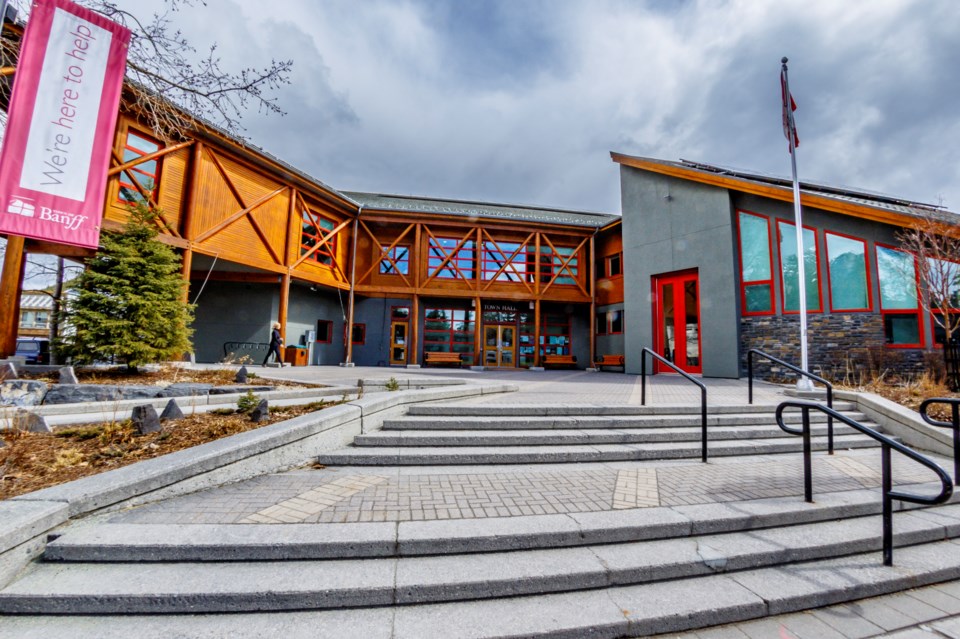BANFF – Banff’s elected officials look set to go with a tax rate split that equally shares the tax burden between businesses and residents for 2021.
On Monday (April 26), the governance and finance committee directed administration to prepare the 2021 tax rate bylaw based on a 6.31:1 tax split, which is what’s needed to accomplish the equal split between the two sectors.
With municipal, provincial education and Bow Valley Regional Housing tax levies, and overall assessment growth factored in, the overall tax levy increase for an average property is about 12 per cent from 2020 and 3.31 per cent from 2019.
Based on the 6.31:1 split, an average residential dwelling assessed at $461,900 would see an annual jump in overall taxes of $241 over 2020 or $69 over 2019. An average non-residential property assessed at $5.9 million and would see an increase of $11,889 over 2020 or $3,250 over 2019 levels.
Town of Banff officials say these changes in tax bills are average and don’t reflect individual property tax changes, noting there is a wide variety of changes in the non-residential sector assessed values given the COVID-19 pandemic.
“These are strictly averages across the board,” said Chris Hughes, the Town of Banff’s director of corporate services.
Banff’s financial plan has two goals related to the tax rate split – that the commercial-residential tax rate split should fall between 3:1 and 6:1 and to share the overall tax increase equally between the two sectors.
“This year, those criteria can’t both be met,” Hughes said.
In addition, the 6.31:1 commercial-residential split also falls outside the 5:1 limit allowed under new provincial government legislation, which was introduced in 2015.
The Town of Banff needs the federal government to approve a legal document, known as an instrument of entrustment, before the 5:1 cap under the Municipal Government Act (MGA) legally applies to the national park community.
Town Manager Kelly Gibson said he believes the document will be finalized within the coming weeks.
“We are expecting to have a phase-in period of roughly five years, so we would have time to work our way back down to 5 to 1,” he said.
The Banff and Lake Louise Hospitality Association (BLLHA), however, is strongly recommending council consider additional tax scenarios to help the struggling businesses affected by the ongoing pandemic, including a 5:1 split.
Darren Reeder, BLLHA’s executive director, said as the Town remains offside with the requirements of the MGA, it represents an unmitigated financial risk to all Banff ratepayers.
“BLLHA is concerned administration’s recommendation to consider a tax rate bylaw based on 6.31:1 is occurring at a time when there is substantial economic uncertainty presenting across the entire commercial ecosystem,” he said.
For 2021, Banff’s residential taxable assessments have remained relatively stable, dropping from $1.9 billion to $1.89 billion. Non-residential assessments decreased by 15.8 per cent from $1.34 billion to $1.13 billion.
With the Alberta government’s finalization of the provincial school tax requisition, the Town of Banff will see an overall increase of $502,908, or 5.25 per cent, to just over $10 million compared to 2020.
That’s due to Banff’s larger than average hike in assessments compared to the rest of the municipalities in Alberta. There’s also a two-year lag time in equalized assessment.
Mayor Karen Sorensen said it’s important for residents to be aware that the provincial school taxes are a big chunk of the overall tax bill, which the municipality collects on behalf of the province.
“The education tax levy makes up 33 per cent of the overall tax levy,” she said.
The Bow Valley Regional Housing levy increased by almost 70 per cent from $380,407 in 2020 to $635,152 in 2021, which makes up 1.4 per cent of the overall tax levy.
The hike is mainly due to increased operating costs related to the opening of Phase II of the Bow River Lodge in Canmore, and increased COVID safety protocols at the lodge and Banff’s Cascade House, which depleted operating reserves that needed to be replenished.
Councillor Grant Canning, who is a Banff council representative on BVRH, said while the percentage increase is startling, the dollar value increase is relatively minor compared to other levies.
“When the pandemic hit … there was a very conscious decision from day one from the board to ensure we did everything we could to protect that very vulnerable population,” he said.
The 2021 tax rate bylaw will be back to council for final consideration before the end of May.


